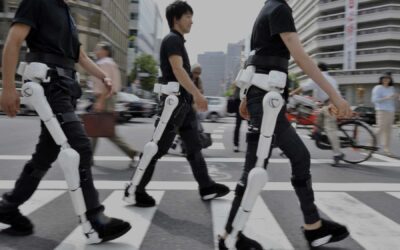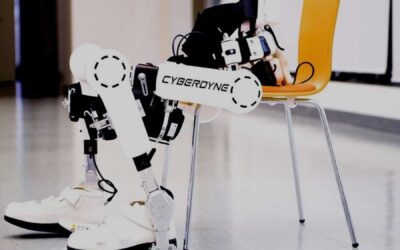HAL – The Hybrid Assistive Limb is a neuronal-controlled cyborg, which is used for the treatment of patients with brain-neuromuscular diseases. HAL’s motion principle in Cyberdyne treatment is a neurological device that helps patients regain the natural movement of their paralysed legs caused due to ‘brain neuromuscular disease’.
Use of The – Wearable Cyborg – HAL
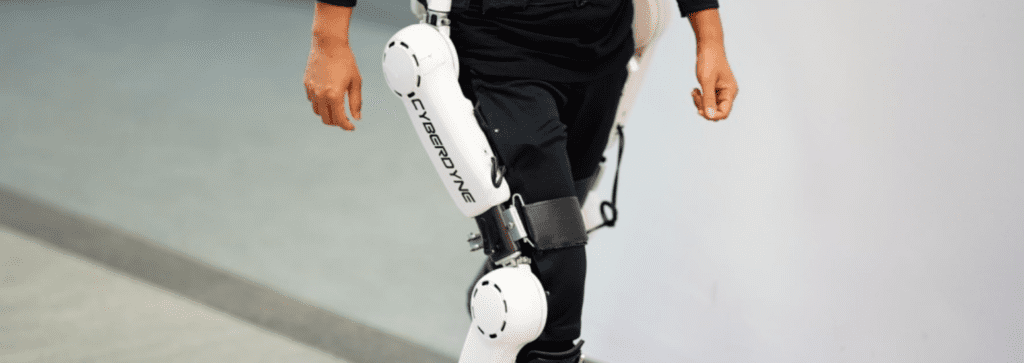
The neuronal-controlled HAL robot suit is used for neuromuscular feedback therapy. The command to execute a movement is transmitted from the brain through the spinal cord to the patient’s muscle which results in the muscle being tensioned to execute the movement. With patients suffering from neurogenic gait disorders this signal chain is partially impaired so that an independent initiation of movement is only possible to a limited degree.
However, the residual neuromuscular impulses of the patient are picked up by sensors and transmitted to the HAL system. The system detects the impulses and provides the patient with the required power assisted to execute the desired movement
The Wearable Cyborg™ HAL’s non-invasive sensors can detect faint “bio-electrical signals” that reflect the wearer’s intention on the surface of their skin.
Cyberdyne HAL’s steps
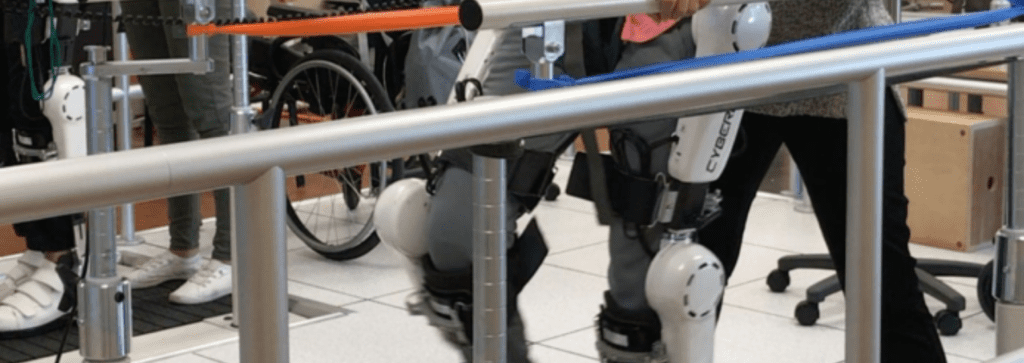
- When a person tries to move their body, the brain transmits necessary signals through the nerves to the muscles.
- Each muscle then contracts to move its corresponding joint when it receives the appropriate command signal sent from the brain through the nerves. With a neuromuscular disease of the brain, this pathway is disrupted and the signal is too weak to generate sufficient force.
- Signals are now sent to the muscles by the brain that trickles onto the skin surface as very faint bio-electrical signals. Wearable Cyborg™ HAL can detect these signals and consolidate this information with other information collected by the device to recognise and complete the intended motion of patients.
- HAL then controls the power units at each joint independently based on these BES and allows the wearer to perform the desired movements with their voluntary commands.
- Finally, when HAL- the Wearable Cyborg™ has appropriately assisted the intended movement, the feeling is fed back to the brain. As a result, a neurological loop of afferent and efferent neurons is established between the brain and the muscles through HAL.
The use of this network of signals to induce neuroplasticity is what we call “interactive biofeedback”. Active use of these neural pathways for voluntary movement with physical feedback to the brain leads to improved physical ability.
Rehabilitation
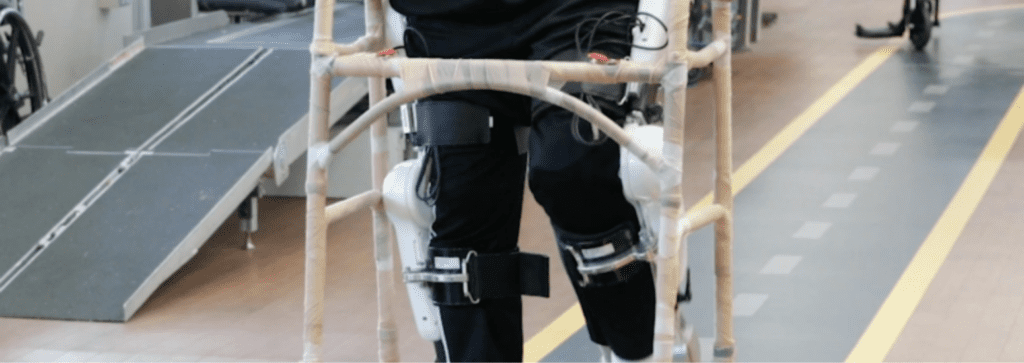
Cyberdyne treatment provides advanced technologies for patients with brain neuromuscular diseases, for their well-being. HAL is also considered the system that accelerates motor learning of the brain which eventually leads to the neuroplasticity of the brain functions.
Patients with progressive brain neuromuscular diseases can profit from HAL training in various ways…
- Preserves and improves gait ability
- Improves endurance
- Positive psychological effects
Cyberdyne ‘HAL’ supports the intended movements and the feeling is fed back to the brain. Active use of the neural pathways for voluntary movement with physical feedback to the brain leads to an important ability for the wearer to walk on their own
Log onto https://rehabmodalities.com/ for a free demo to know more about Cyberdyne treatment


